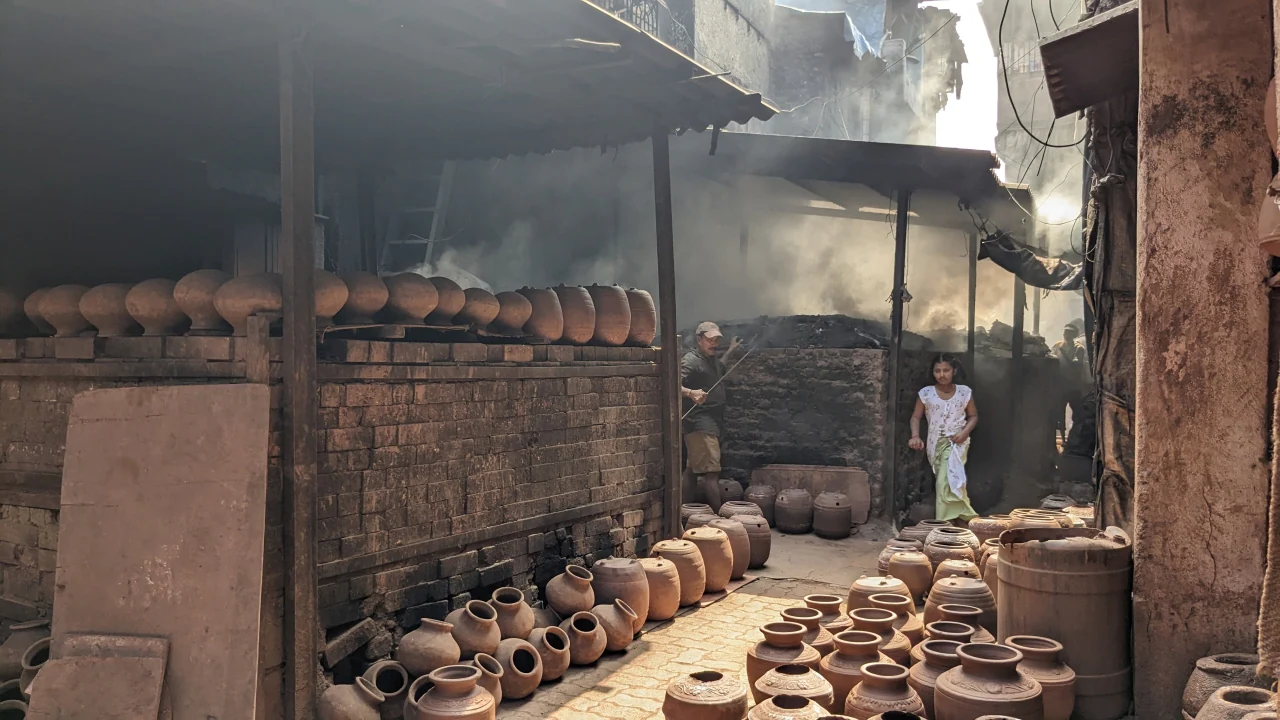Kumbharwada
In the bustling city of Mumbai, amid the high-rise buildings and chaotic streets, lies a hidden gem that preserves a rich cultural heritage and craftsmanship. Kumbharwada, also known as the Potter’s Village, is a vibrant neighborhood where generations of potters have carried on the tradition of creating beautiful clay pottery. This blog will take you on a journey to discover the enchanting world of Kumbharwada, delving into its history, the artistry of its potters, and the significance of pottery in Indian culture.
A Glimpse into History
Kumbharwada, located in the Dharavi area of Mumbai, has a history that dates back several centuries. The word “Kumbhar” translates to “potter” in the Marathi language, spoken in the region. It is believed that the settlement of potters in this area began during the reign of the Maratha Empire. The potters migrated from various parts of Maharashtra, bringing their skills and traditions with them. Over time, Kumbharwada became a thriving hub for pottery production, attracting craftsmen from far and wide.
Artistry and Craftsmanship
The heart and soul of Kumbharwada lie in the artistic mastery of its potters. Stepping into this village, you’ll witness the potters engrossed in their work, skillfully shaping clay into exquisite pottery pieces. The potters here predominantly use the wheel-throwing technique, where a potter’s wheel is used to shape the clay. From earthenware utensils and decorative items to intricate clay idols and ceremonial pots, the artisans of Kumbharwada showcase their exceptional craftsmanship in every piece.

Techniques and Tools
The potters of Kumbharwada employ a range of techniques and tools to create their masterpieces. They begin by kneading the clay to achieve the desired consistency, removing any impurities in the process. The wheel-throwing technique involves spinning the wheel with the foot while using skilled hand movements to shape the clay. Various tools, such as wooden paddles and scrapers, are used to refine the forms and add intricate details. Once the pottery is shaped, it is left to dry before undergoing the firing process in traditional kilns.

Preservation of Traditional Methods
Despite living in a rapidly modernizing city, the potters of Kumbharwada have fiercely maintained their traditional methods of pottery making. They have passed down their knowledge from one generation to the next, ensuring that age-old techniques are preserved. While some adaptations have been made to cater to contemporary demands, the essence of the craft remains deeply rooted in tradition. The potters’ dedication to their heritage is commendable, and it adds a unique charm to their creations.
Cultural Significance
Pottery holds immense cultural significance in Indian society, and Kumbharwada serves as a testament to this. Clay pottery has been an integral part of Indian rituals, ceremonies, and daily life for centuries. From the earthen diyas (oil lamps) that illuminate festivals to the intricately crafted clay utensils used in traditional cooking, pottery is interwoven into the fabric of Indian culture. It not only embodies artistic expression but also symbolizes a connection with the earth and a sustainable way of life.

Challenges and Triumphs
Like any traditional craft, the potters of Kumbharwada face numerous challenges in the modern era. The rise of plastic and mass-produced alternatives has affected the demand for handmade pottery. Moreover, the rapid urbanization and encroachment pose threats to their way of life. However, despite these obstacles
Cultural Tourism and Community Initiatives
Recognizing the cultural significance of Kumbharwada, various community initiatives and organizations have come forward to support the potters and promote their craft. Cultural tourism has also played a vital role in attracting visitors to Kumbharwada, offering them an opportunity to witness the potters’ skills firsthand, engage in workshops, and purchase their unique creations. These initiatives not only generate income for the potters but also create awareness about the importance of preserving traditional crafts and heritage.

Future Prospects
While Kumbharwada continues to face challenges, the future holds promise for this remarkable pottery village. Efforts are being made to provide the potters with better infrastructure, access to modern technologies, and improved marketing opportunities. Additionally, increased awareness about sustainability and the value of handmade products has led to a growing appreciation for the artistry of Kumbharwada’s potters. By adapting to changing times while staying true to their roots, the potters of Kumbharwada are poised to thrive and create a lasting legacy for future generations.
Read Also: Top 10 Places to Visit in July 2023 in India | Best Summer Destinations

Conclusion
Kumbharwada, the Potter’s Village in Mumbai, stands as a testament to the timeless beauty and cultural significance of pottery. This hidden enclave preserves the age-old traditions of pottery-making while adapting to the demands of the modern world. The potters of Kumbharwada, with their exceptional craftsmanship and unwavering dedication, create unique pieces that embody the essence of Indian heritage. Exploring Kumbharwada offers an opportunity to witness the transformative power of art, the resilience of traditional crafts, and the beauty of preserving cultural legacies..
However, despite these obstacles, the potters of Kumbharwada have shown remarkable resilience and adaptability. They have embraced new marketing strategies by showcasing their products in exhibitions, art galleries, and online platforms. Additionally, they have diversified their range of pottery to cater to contemporary tastes, incorporating modern designs while still retaining the essence of their traditional craft. Through their determination and innovation, the potters of Kumbharwada continue to find ways to sustain their livelihoods and keep their art alive.



